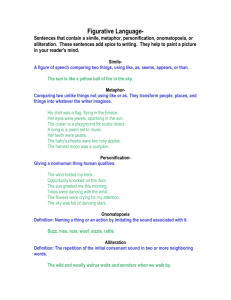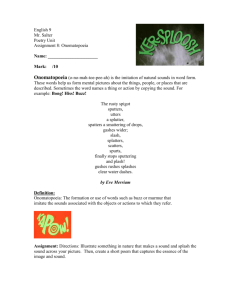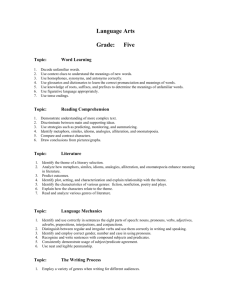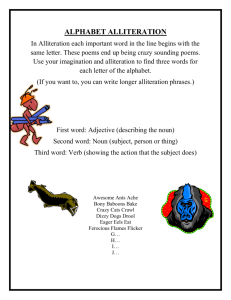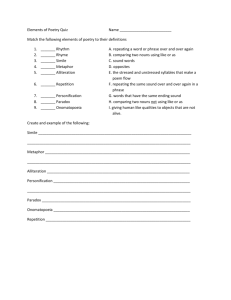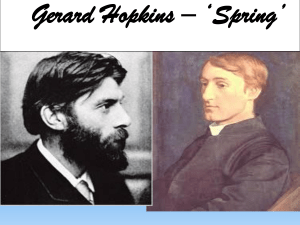Overview of Poetic Elements III
advertisement
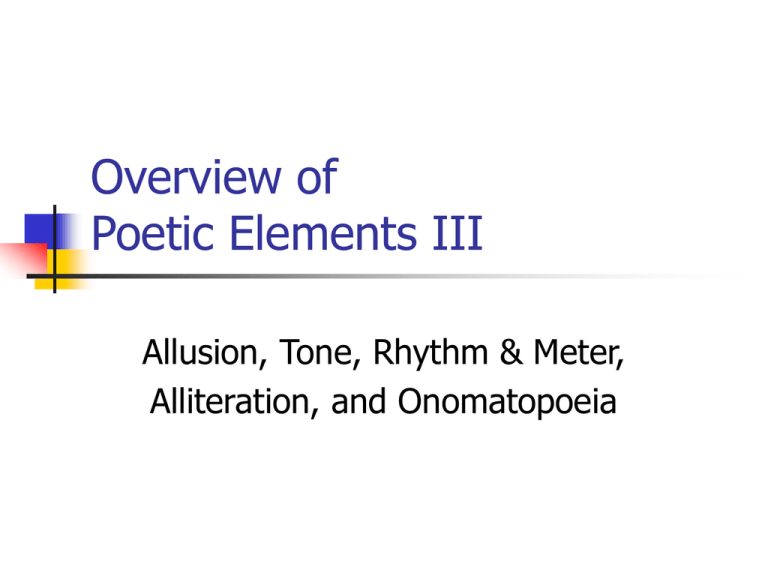
Overview of Poetic Elements III Allusion, Tone, Rhythm & Meter, Alliteration, and Onomatopoeia Allusion A reference to something in history or previous literature Similar to connotation and symbolism Examples “Out, Out—” by Robert Frost (p. 779) Alludes to passage in Macbeth (see page 780) Other Examples of Allusion “in Just—” by e.e. cummings (p. 782) “The little lame balloonman” “On His Blindness” by John Milton (p. 783) “that one talent which is death to hide Tone The writer’s or speaker’s attitude toward the subject, the reader, or herself or himself (p. 804) Examples “For a Lamb” by Richard Eberhart (p.806) “Apparently with no surprise” by Emily Dickinson (p. 806) “The Oxen” by Thomas Hardy (p. 811) Musical Devices: Pattern Musical quality is achieved by arrangement of sounds and of accents. “Do not go gentle into that good night” by Dylan Thomas (p. 889) Musical Devices: Alliteration Alliteration: close repetition of initial consonants “God’s Grandeur” by Gerard Manley Hopkins (p. 828) Uses alliteration extensively See the next slide for another Hopkins poem with more alliteration. Gerard Manley Hopkins No Worst, There Is None No worst, there is none. Pitched past pitch of grief, More pangs will, schooled at forepangs, wilder wring. Comforter, where, where is your comforting? Mary, mother of us, where is your relief? My cries heave, herds-long; huddle in a main, a chiefwoe, world-sorrow; on an age-old anvil wince and sing-Then lull, then leave off. Fury had shrieked "No lingering! Let me be fell: force I must be brief." O the mind, mind has mountains; cliffs of fall Frightful, sheer, no-man-fathomed. Hold them cheap May who ne'er hung there. Nor does long our small Durance deal with that steep or deep. Here! creep, Wretch, under a comfort serves in a whirlwind: all Life death does end and each day dies with sleep. Onomatopoeia Onomatopoeia: Words that mimic their meaning in their sound “I heard a fly buzz when I died” by Emily Dickinson (p. 871) Note the repetition of the “b” and “z” sounds in “be,” “was” and “buzz” to imitate the fly’s “uncertain, stumbling buzz.” http://www.emilydickinson.org/ http://www.poets.org/poet.php/prmPID/155
